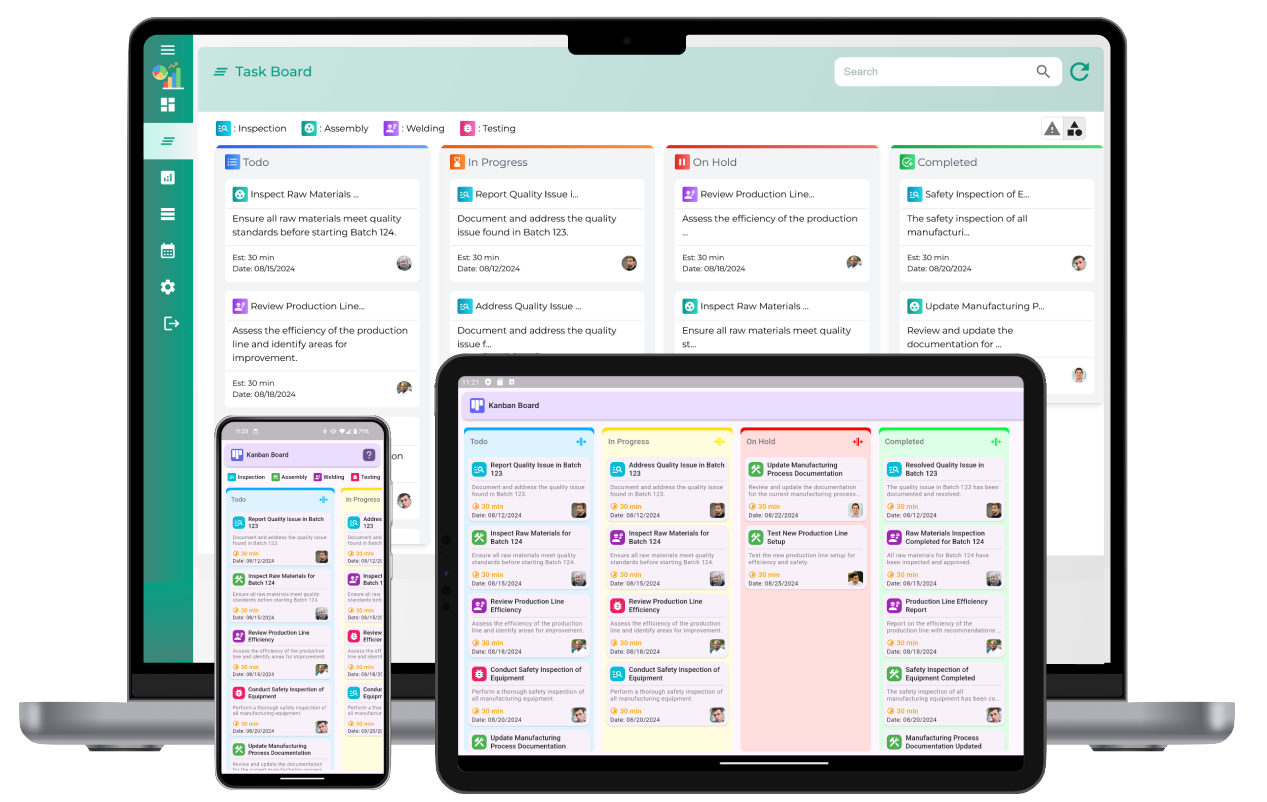A Kanban board is a powerful tool for visualizing workflows, managing tasks, and optimizing efficiency. It enhances productivity by providing a structured approach to tracking work progress in real-time. Advanced Kanban boards go beyond basic task management, incorporating features that support automation, analytics, and collaboration. These features help teams streamline processes, reduce bottlenecks, and continuously improve their workflow.

1. Key Components of a Kanban Board
A Kanban board typically consists of columns representing different stages of a workflow, with task cards moving from one stage to another. Advanced features extend the board’s functionality beyond basic task tracking.
- Customizable Columns: Allows users to create unique workflow stages.
- Work-In-Progress (WIP) Limits: Prevents overloading stages to maintain efficiency.
- Swimlanes: Categorizes tasks by type, priority, or team.
- Card Customization: Adds details such as priority, due dates, and labels.
- Task Dependencies: Links related tasks to ensure proper sequencing.
2. Automation and Workflow Optimization
One of the most significant advancements in Kanban boards is automation. By reducing manual updates, teams can focus on execution rather than administrative work.
- Rule-Based Task Movement: Automates card transitions based on status updates.
- Recurring Tasks: Automates scheduling for routine activities.
- Alerts and Notifications: Keeps team members informed of deadlines and progress.
- Integration with Other Tools: Connects with project management and communication platforms.
3. How to Set Up an Effective Kanban Board
Creating an optimized Kanban board requires careful planning and customization to match a team's workflow.
Step 1: Define Workflow Stages
Identify the key stages tasks must go through, such as “To Do,” “In Progress,” “Review,” and “Completed.” Customize these based on project needs.
Step 2: Set Work-In-Progress Limits
Establish limits on the number of tasks allowed in each stage to prevent bottlenecks and maintain efficiency.
Step 3: Customize Task Cards
Include details such as due dates, priority levels, assigned team members, and checklists within each card for better task tracking.
Step 4: Implement Automation
Use rule-based triggers to automate task transitions, notifications, and recurring task creation.
Step 5: Monitor and Adjust
Regularly review the board’s effectiveness and adjust columns, limits, and automation rules as needed.
4. Analytics and Reporting
Advanced Kanban boards provide analytics to track performance, efficiency, and workflow bottlenecks.
- Cumulative Flow Diagrams: Displays task progression over time.
- Lead and Cycle Time Analysis: Measures how long tasks take to complete.
- Bottleneck Identification: Highlights workflow stages with delays.
- Task Completion Trends: Tracks productivity over time.
5. Collaborative Features
Kanban boards enhance team collaboration by providing features that support communication and shared task management.
- Comments and Mentions: Allows team members to communicate directly on tasks.
- File Attachments: Enables document sharing within task cards.
- Activity Logs: Tracks changes and updates in real-time.
- Role-Based Access: Controls permissions for different team members.
6. Mobile and Remote Accessibility
With the rise of remote work, modern Kanban boards offer mobile compatibility and cloud-based access.
- Cloud Syncing: Ensures data is always up to date.
- Mobile-Friendly Interface: Allows task updates from anywhere.
- Offline Mode: Enables work even without an internet connection.
7. Benefits of Using an Advanced Kanban Board
Implementing an advanced Kanban board enhances efficiency, collaboration, and project transparency.
- Increased Productivity: Reduces wasted time and optimizes task management.
- Better Task Visibility: Provides a clear view of project progress.
- Improved Team Collaboration: Facilitates communication and task coordination.
- Data-Driven Decision Making: Uses analytics to refine workflows.
8. Overcoming Common Challenges
Despite their benefits, Kanban boards may present challenges, which can be addressed with the right strategies.
- Overloading the Board: Set limits to prevent excessive task accumulation.
- Lack of Team Engagement: Provide training and encourage active participation.
- Poor Task Prioritization: Use labels, categories, and priority markers.
- Automation Complexity: Start with simple automation rules and gradually expand.
Advanced features of kanban board
What are the advanced features of a Kanban board?
Advanced Kanban boards offer features like workflow automation, WIP limits, real-time collaboration, analytics, backlog management, and integration with other tools.
How does workflow automation enhance a Kanban board?
Workflow automation in Kanban streamlines task movement, reduces manual updates, and triggers notifications based on predefined conditions.
What is WIP (Work In Progress) limit in Kanban?
WIP limits restrict the number of tasks in progress at any time, helping teams maintain focus and avoid bottlenecks.
How does Kanban support real-time collaboration?
Kanban boards enable real-time updates, shared task visibility, and instant communication, improving team coordination.
What role do analytics and reporting play in a Kanban board?
Analytics provide insights into task completion time, efficiency, and bottlenecks, helping teams optimize performance.
How does a Kanban board help in backlog management?
Kanban boards organize tasks in a structured backlog, allowing teams to prioritize and manage pending work efficiently.
What are custom swimlanes in Kanban?
Swimlanes categorize tasks based on priority, team, or workflow stage, improving task organization and visualization.
How do card aging indicators improve task prioritization?
Card aging indicators highlight overdue or stagnant tasks, ensuring timely action and priority adjustments.
What is the importance of automated notifications in Kanban?
Automated notifications alert team members about task updates, deadlines, or status changes, enhancing responsiveness.
How does Kanban integrate with other project management tools?
Kanban boards integrate with tools like scheduling, reporting, and communication platforms to streamline workflow.
What is the role of dependency tracking in Kanban?
Dependency tracking identifies and manages task relationships, ensuring smooth workflow progression.
How does a digital Kanban board improve accessibility?
Digital Kanban boards provide remote access, mobile compatibility, and cloud-based updates for seamless collaboration.
What is cycle time tracking in Kanban?
Cycle time tracking measures the time taken to complete tasks, helping teams assess efficiency and optimize processes.
How does Kanban support lean and agile methodologies?
Kanban aligns with lean and agile principles by promoting continuous improvement, flexibility, and efficiency in workflows.
What is the benefit of a Kanban board for remote teams?
Kanban boards enable remote teams to track progress, collaborate effectively, and maintain workflow visibility from any location.